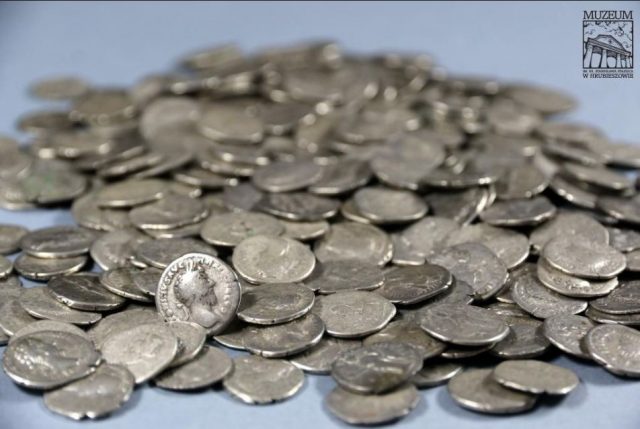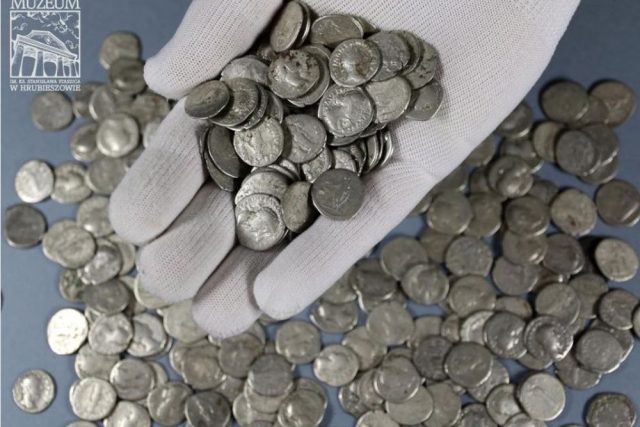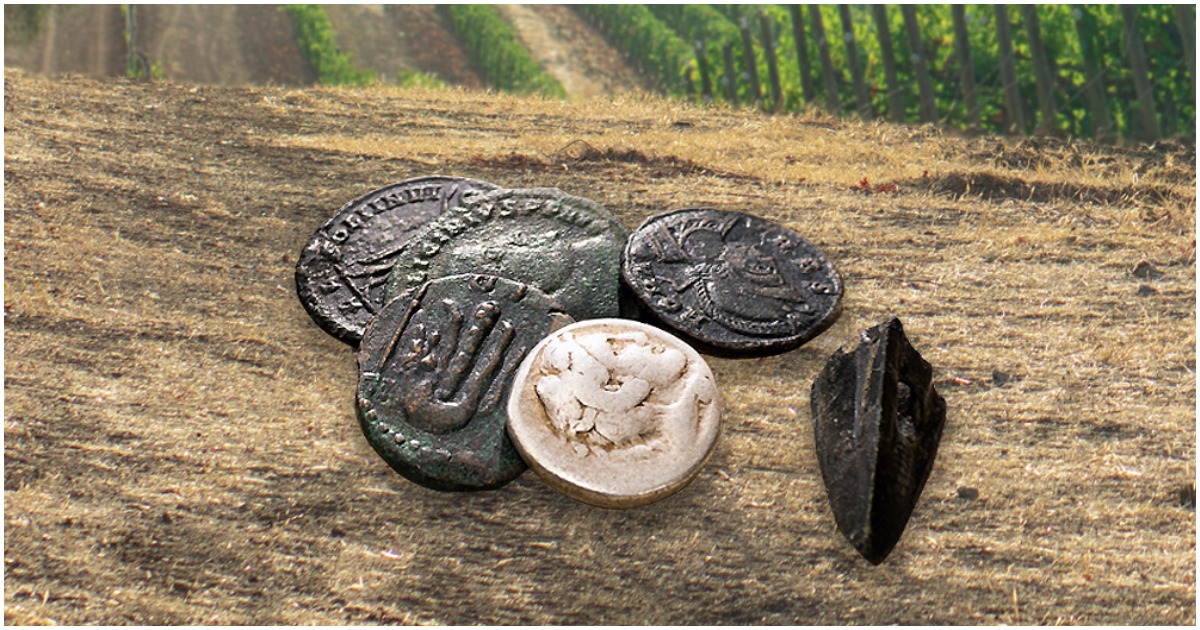One of the largest hauls of Roman coins ever found was just unexpectedly discovered while a farmer in Poland was out looking for deer antlers. And now the find has been hailed as the “Crown Jewel of Polish Archaeology”. Polish farmer Mariusz Dyl relaxes when he’s not working in his fields by scouring his land for disused and forgotten antlers from stags. It’s a hobby he enjoys, and perhaps it takes his mind off the rigors of daily life, a life devoted to growing crops that feed his family and nearby cities.
Imagine his surprise, then, when his land yielded not crops like wheat or barley or other grain, bur rather almost 1,753 rare, centuries old Roman coins. Dyl was out scouting around for antlers, but instead turned up an archaeological treasure trove of ancient currency.
Dyl’s farm is located in the south of Poland, in a region called Lublin. He was checking out about 100 metres of land when he stumbled upon the coins that, experts say, are approximately 2,000 years old.

As soon as he made the discovery, Dyl called in a team of archaeologists and volunteers to aid him in his search for more of the money. By the time they’d finished their hunt, the trove totaled 1,753 denarii, as the rare Roman coins are called.
One of the experts who joined in to help is Bartlomies Bartecki, who is the director of the Hrubieszow Museum, which is located not far from Dyl’s acreage. He, along with the other “treasure seekers,” collected the coins and sent them off to the museum for cleaning, examination and validation, to ensure they were in fact as old as Bartecki suspected.

They were, making them one of the most astonishing finds from the Roman period ever to be uncovered in Poland. Bartecki told heritagedaily, “This is undoubtedly the largest treasure from the Roman period in the Lublin region, and one of the largest found in Poland so far.”
The Lublin region was once inhabited by people known as the “Vandals,” during the 2nd century A.D. They were ultimately forced out by another group, called the “Goth”, and so they headed for Scandinavia and parts of Europe, where they settled by the beginning of the 3rd century.
One method the museum used to authenticate the coins was identifying the two Roman emperors depicted on them, Emperor Nerva and Emperor Septimius Severus. This led to the realization that the coins were minted over the course of one century, from the end of the 1st century A.D. to the end of the 2nd. It is methods like those which enable archaeologists, historians and other experts to verify the find discovered in the field, along with close inspection of each coin. The rare currency will soon be ready for an online public exhibition at the museum.
Related Article: Hoard of Roman Coins found linked to epic revolt of Celtic Queen Boudicca
As for farmer Dyl, he will no doubt continue to check his fields for more than the edible treasures he grows each season. Who knows? Perhaps next time he’ll find something every bit as rare as these Roman coins, like the ornate box experts believe they were kept in once. Right now, they say that in all likelihood the box, or perhaps a pouch of some sort, has dissolved into the earth. But with Dyl’s keen eye, something may, one of these days, turn up.
